The Basic Science of Yarn Dyeing
We have all seen the beautiful colors that can be created by dyeing up a skein of yarn. But have you ever wondered why that happened? Today on the blog we are going to dive into the science behind dyeing yarn! We will cover acid dyes and natural dyes.
But first, a brief explanation of the structure of wool and other protein fibres. A protein fibre refers to a fibre created by an animal, including wool, cashmere, silk, mohair, and more. These fibres are primarily composed of the protein keratin, the same compound as your own hair and nails. That makes protein fibres strong, resilient, and excellent for dyeing. These fibres have an outer layer of a scaly, protective cuticle that slows the absorption of water. That cuticle is the reason presoaking your yarn is an essential step.
When yarn is presoaked, the fibre allows water to penetrate all the way into the core of the yarn. This process allows the dye to be absorbed evenly through diffusion. Diffusion is when molecules from a high concentration area move to an area of low concentration. In this case, the dye molecules will move from outside the yarn to inside the yarn. There, the dye molecules bond to the fibre at the membrane – a layer underneath the outer cuticle.
A note about dyeing with superwash yarn – superwash yarn is treated so that it will not felt when washed. The reason yarn felts is that the scaly cuticle can bind to itself when agitated. Superwash yarn prevents felting by smoothing the outer layer which typically makes superwash yarn absorb water and dye more easily. If you are not used to dyeing with superwash wool, test a small amount first before dyeing an entire skein.
A bond forms because protein fibres are made up of twenty amino acids. The amino acids primarily form ionic bonds with the dye pigment. Ionic bonds are bonds between two oppositely charged molecules. This is the same effect as putting two North and South magnets together. The magnets zoom together and stick. That is how the dye molecules bond to the fibre. Once you have created the right environment, the dye bonds with the fibre, making a vibrant, hand-dyed skein of yarn. All Knomad yarn blends contain at least 50% protein fibres so the methods discussed below can be used on your favorite skein of Knomad yarn!
Acid Dyes:
Acid dyes are a great option for dyeing any protein fibre. The “acid” in acid dye refers to the environment necessary for the dye to bond to the fibre. Whether you are using a commercially produced dye, food coloring, or Kool-Aid , adding acid to the dye bath is an essential part of the process. The most commonly used acids are white vinegar or citric acid crystals. These acids lower the ph of the dye bath which allows the dye to bond with the fibre at the molecular level. Heat is a key component of an acid dye as well. The heat and acid work together to agitate the fibre molecules. This agitation encourages the fibre molecules to bond with the dye molecules. When all of the dye molecules have bonded to the fibre, the dye bath will be clear. This is referred to as the dye bath being “exhausted.”
Natural Dyes:
Natural dyes refer to any naturally occurring dyestuffs. These are often simple materials found in the kitchen or the garden like avocado, turmeric, pokeberries, and red cabbage. The key difference between acid dyes and natural dyes is that natural dyes typically require the use of a mordant to fix the color instead of an acid. One exception to this is the avocado. Avocados have tannins that naturally act as a mordant and assist in creating ionic bonds with the fibre. The word mordant is derived from a Latin word that means “to bite.” Commonly used mordants include alum, copper, and iron salts.
Mordants help the dye pigments form the necessary ionic bonds with the amino acids in the fibre. Some mordants may shift the color of the dye bath so it is important to test small samples in advance. The pigment extracted from a natural dye bath will shift with the addition of an acid or a base. This can be used to your advantage when creating a dye bath. However, when rinsing a naturally dyed skein, be sure to use ph neutral soap to prevent shifting the color after you’ve finished dyeing.
To create a natural dye, the dye is first extracted from the dyestuffs. This is typically done by simmering the material first while the undyed yarn is presoaking. The dyestuffs are strained out of the bath. The yarn can be presoaked with a mixture of water and the mordant of your choice or a mordant can be added into the dye bath with the yarn. Then the yarn is added to the dye bath and simmered until the desired color is achieved. The yarn is cooled, rinsed thoroughly, and dried.
Now you know that when you are dyeing up your next skein of yarn in your dye pot, new ionic bonds are forming to create your own, unique hand-dyed yarn. We can’t wait to see what you create!
Tags: Beginners, Hand dyers
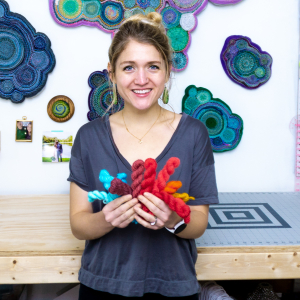
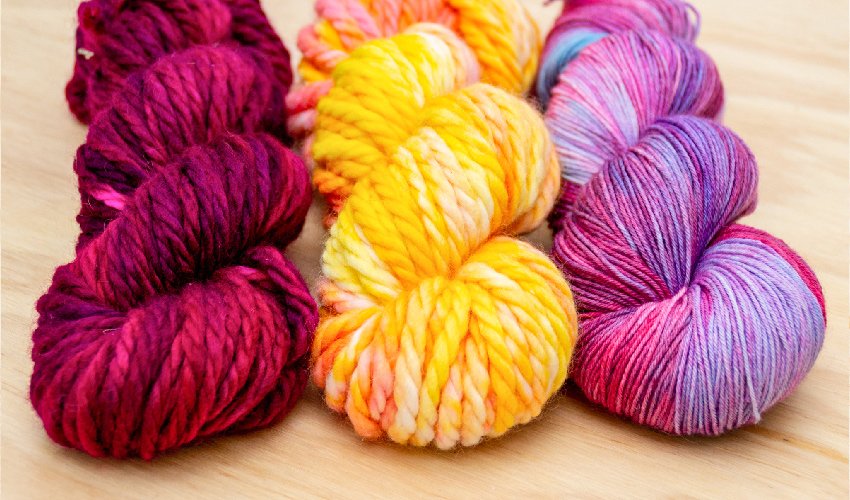
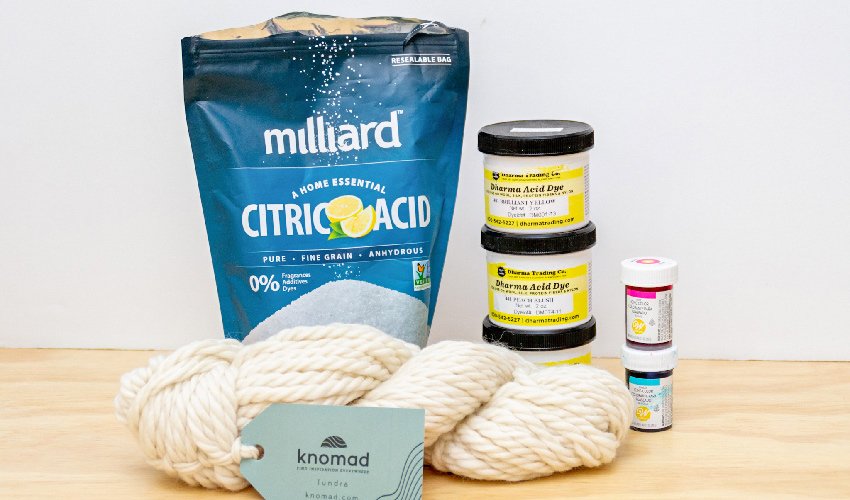
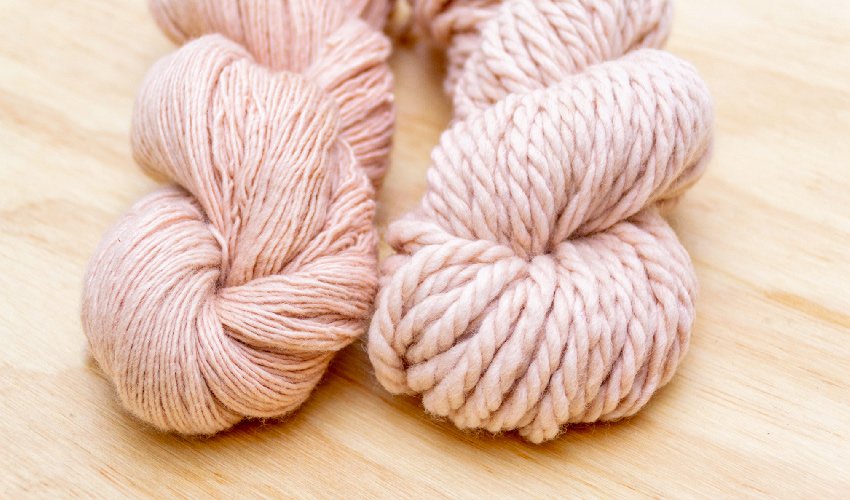






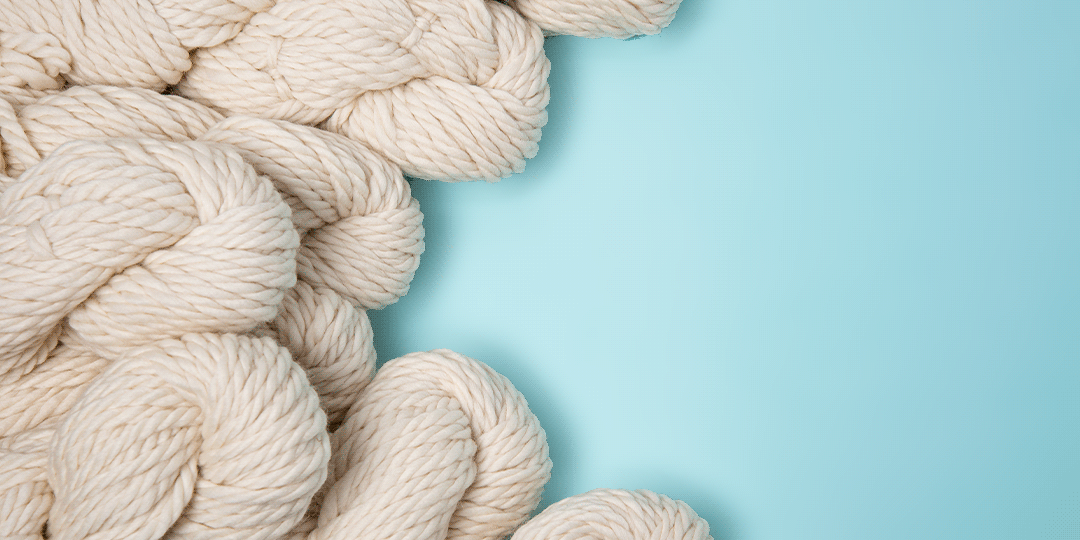

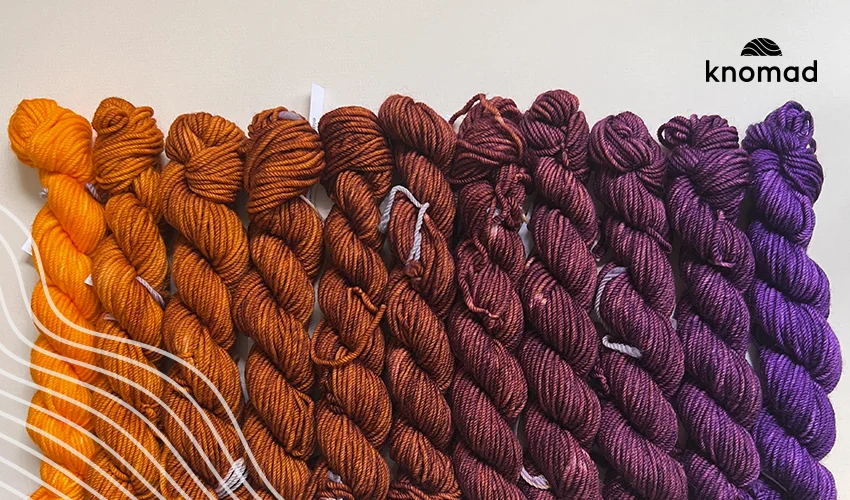
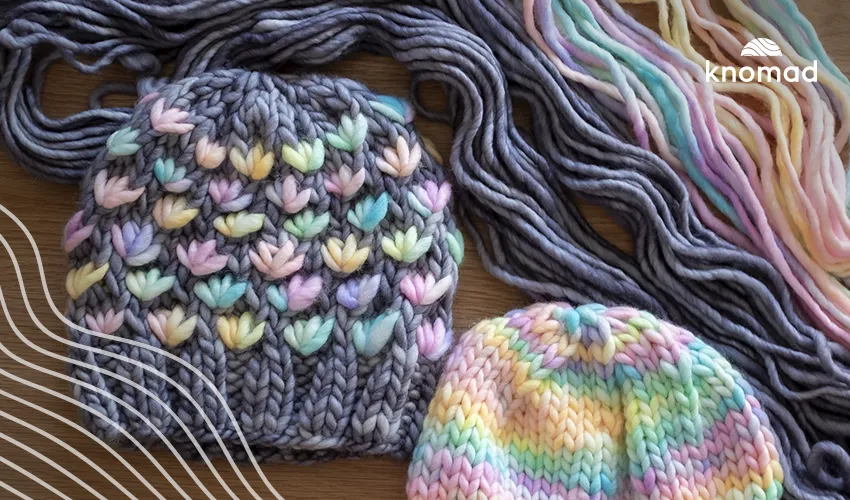
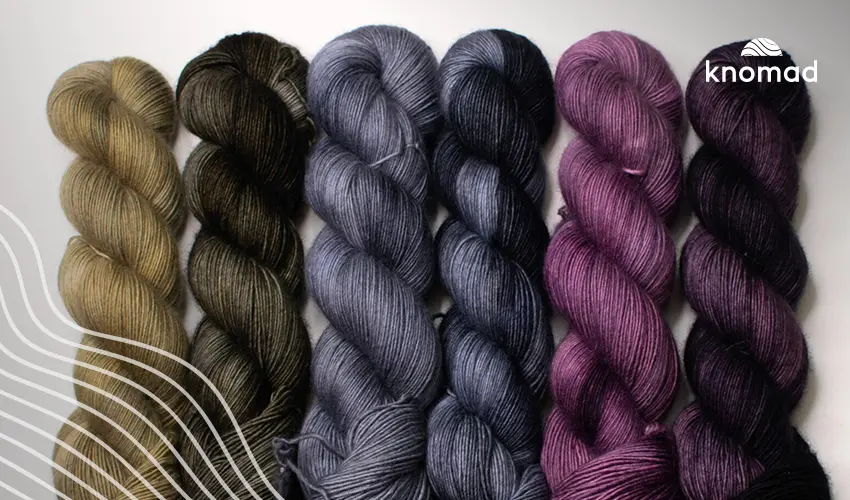
Leave a Reply